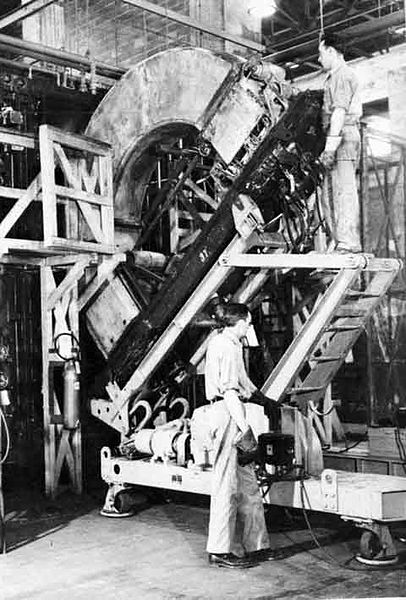Robert Lyster Thornton was a British-Canadian-American physicist who worked on the cyclotrons at Ernest Lawrence's Radiation Laboratory in the 1930s. During World War II he assisted with the development of the calutron as part of the Manhattan Project. He returned to Berkeley in 1945 to lead the construction of the 184-inch (470 cm) cyclotron, and spent the rest of his career there.
Thornton in 1961
A calutron is a mass spectrometer originally designed and used for separating the isotopes of uranium. It was developed by Ernest Lawrence during the Manhattan Project and was based on his earlier invention, the cyclotron. Its name was derived from California University Cyclotron, in tribute to Lawrence's institution, the University of California, where it was invented. Calutrons were used in the industrial-scale Y-12 uranium enrichment plant at the Clinton Engineer Works in Oak Ridge, Tennessee. The enriched uranium produced was used in the Little Boy atomic bomb that was detonated over Hiroshima on 6 August 1945.
An Alpha calutron tank removed from the magnet for recovery of uranium-235
Frank Oppenheimer (center right) and Robert Thornton (right) examine the 4-source emitter for the improved Alpha calutron.
The XAX development unit at Oak Ridge was used for research, development and training.
Control panels and operators for calutrons at the Oak Ridge Y-12 Plant. The operators, mostly women, worked in shifts covering 24 hours a day.





